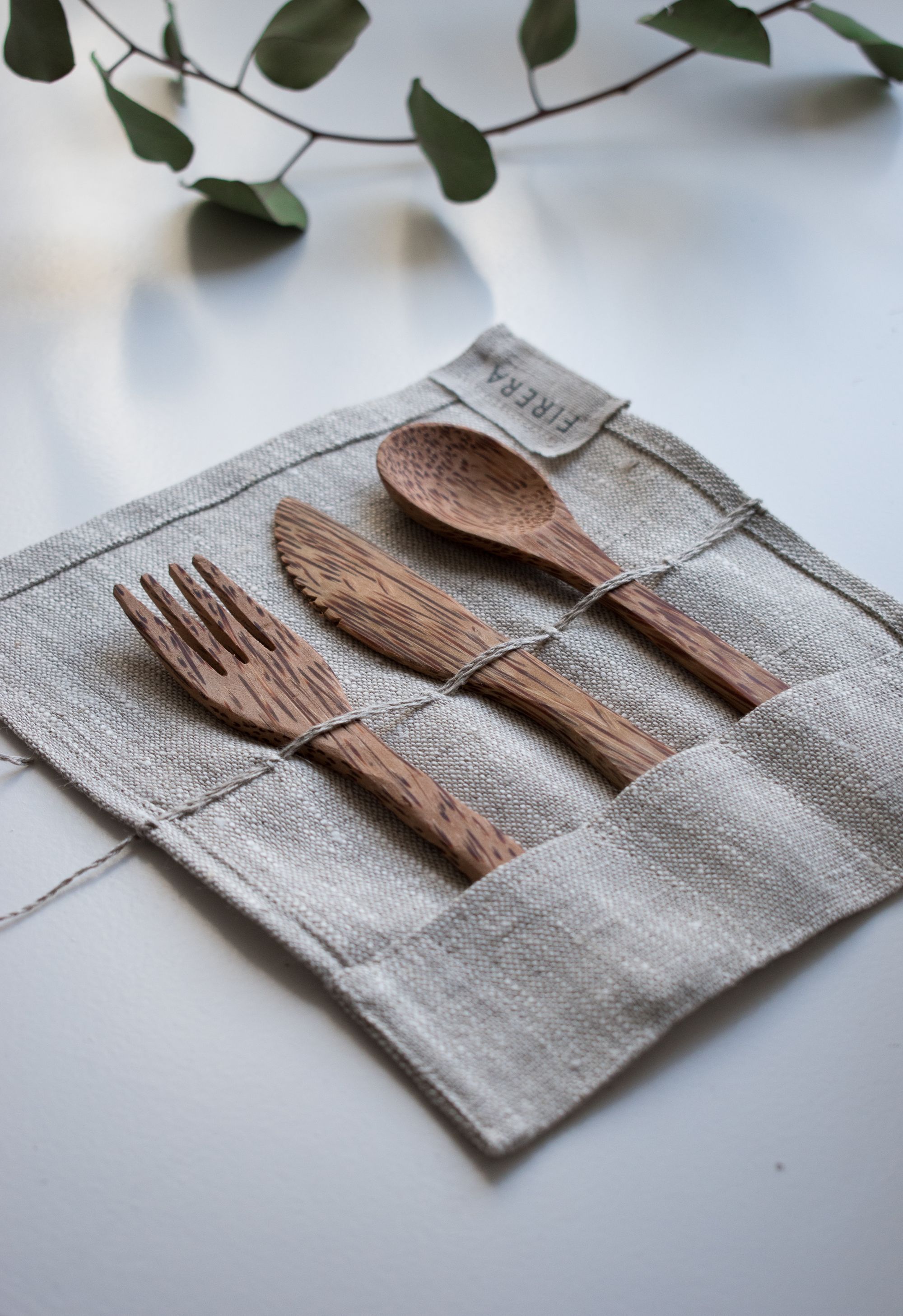Furniture manufacturing is an important industry that requires careful adherence to rules and regulations. The furniture industry is highly regulated, and manufacturers must comply with a range of laws and standards that cover all aspects of their operations, from the materials used to the safety and quality of the furniture produced.
This article covers the following:
- What is Furniture Manufacturing?
- Understanding the Types of Furniture Manufacturing
- How to Choose the Right Furniture Manufacturer
- The Benefits of Investing in Furniture Manufacturing
- Design Tips for Furniture Manufacturing
- Furniture Manufacturing Trends to Watch
- Regulatory Requirements for Furniture Manufacturing:
- Safety Standards
- Environmental Regulations
- Quality Control Regulations
- Labeling Requirements
- Materials and Chemicals Regulations
- Fire Retardant Regulations
- Packaging Regulation
What is Furniture Manufacturing?
Furniture manufacturing is the process of designing, making, and selling furniture. It involves taking raw materials such as wood, metals, fabrics, and plastics and turning them into furniture. The process involves a variety of steps, including design, cutting, shaping, and assembly.
Design
The first step in the furniture-making process is designing the furniture. This involves coming up with a concept and creating detailed drawings to illustrate the design. This step requires knowledge of furniture design, ergonomics, and materials.
Cutting
After the design is complete, the next step is to cut the pieces of furniture to the right size and shape. This can be done by hand or with a machine.
Shaping
Once the pieces are cut, they need to be shaped and finished. This involves sanding, staining, and other processes to create the desired look.
Assembly
Finally, all the pieces of furniture need to be put together. This involves using screws, nails, glue, or other adhesives. Once the furniture is complete, it needs to be tested for quality and safety. If it meets the required standards, it can then be sold.
Furniture manufacturing is a complex process, but it can be a rewarding and lucrative business. With the right knowledge and tools, it’s possible to start a successful furniture business.
Understanding the Types of Furniture Manufacturing
Furniture manufacturing is the process of creating and producing furniture for both commercial and residential use. There are several types of furniture manufacturing, each of which involves different materials, processes, and techniques. Let’s look at the different types of furniture manufacturing and how they differ from one another.
Solid Wood Manufacturing
Solid wood furniture manufacturing is the process of using whole pieces of wood to create furniture. This type of furniture manufacturing is often used for higher-end pieces and is known for its durability and classic look. The wood is cut and shaped, then pieces are joined together with glue, nails, screws, and dowels, and finally sanded, stained, and finished.
Veneer Manufacturing
Veneer furniture manufacturing is the process of using thin sheets of wood, known as veneer, to cover a core material such as plywood or particle board. Veneer furniture can look just as beautiful as solid wood furniture, but it is less expensive and often more resistant to damage. The veneer is attached to the core material with glue and can be finished with a variety of finishes or stains.
Laminate Manufacturing
Laminate furniture manufacturing is the process of using plastic, paper, or vinyl laminate to cover a core material such as particle board. This type of furniture is usually less expensive than solid wood or veneer furniture, and it is often more resistant to damage as well. The laminate is applied with an adhesive, and then the furniture is finished with a variety of finishes or stains.
Metal Manufacturing
Metal furniture manufacturing is the process of using metal, such as aluminum, steel, or iron, to create furniture. Metal furniture is often used in commercial settings due to its durability and strength. Metal furniture is usually welded together and then finished with paint or powder coating.
Upholstery Manufacturing
Upholstery furniture manufacturing is the process of using fabric, foam, and other materials to cover furniture. This type of furniture is often used in residential settings due to its comfort and style. The upholstery is usually attached to the frame with staples, and then the furniture is finished with a variety of fabrics, trims, and accessories.
These are the most common types of furniture manufacturing, but there are many other processes that can be used to create furniture. It's important to understand the different types of furniture manufacturing so that you can make an informed decision when purchasing furniture. Each type of furniture has its own advantages and disadvantages, and understanding the differences can help you make the best choice for your needs.
How to Choose the Right Furniture Manufacturer
Choosing the right furniture manufacturer is essential to ensure that you get the best quality pieces for your home or business. Here are some tips to help you make the right choice:
Research Different Furniture Manufacturers
Before you choose a furniture manufacturer, it is important to conduct research on the different options available. Consider the different materials, finishes, styles, and price points offered by various manufacturers. Make sure to read reviews and compare the pros and cons of each manufacturer.
Check Quality
Quality is an important factor to consider when choosing furniture. Check the construction and finish of a piece to ensure that it is well-made and durable. Look for furniture pieces that are made from high-quality materials and have a long lifespan.
Consider Customization
If you are looking for custom furniture, make sure to check if the manufacturer offers customization services. This will allow you to get furniture pieces that are tailored to your preferences and needs.
Look for Warranties
A good furniture manufacturer will offer a warranty on their furniture pieces. This will help protect you against any defects or issues with the furniture.
Consider Delivery and Installation
Depending on where you are located, it may be difficult to get the furniture delivered and installed. Make sure to check if the manufacturer offers delivery and installation services to make the process easier.
Compare Prices
Price is an important factor to consider when choosing furniture. Compare prices from different manufacturers to ensure that you are getting the best deal possible. These are some tips to help you choose the right furniture manufacturer. Make sure to do your research, check the quality, and compare prices to get the best value for your money.
The Benefits of Investing in Furniture Manufacturing
Low Start-up Costs
One of the main benefits of investing in furniture manufacturing is that the start-up costs are relatively low. This means that entrepreneurs who want to start their own furniture manufacturing business can do so with a small amount of capital.
High Demand
Another benefit of investing in furniture manufacturing is that there is a high demand for furniture products. This means that entrepreneurs can easily find customers for their products and can make a profit in a relatively short amount of time
Eco-Friendly
Investing in furniture manufacturing is also a great way to reduce the environmental impact of furniture production. Furniture manufacturers can use eco-friendly materials and processes to produce their products, which helps to reduce the amount of waste and resources used in the production process.
Customization
Investing in furniture manufacturing also allows entrepreneurs to customize their products to meet the needs of their customers. This means that they can create unique, one-of-a-kind pieces that are tailored to their customers’ preferences.
Profitability
Finally, investing in furniture manufacturing is a great way to make a profit. Furniture manufacturing businesses can generate high profits due to the high demand for furniture products and the relatively low cost of production.
Design Tips for Furniture Manufacturing
Focus on Ergonomics
When designing furniture, it is important to consider ergonomics. Ergonomics is the study of designing products to fit the user and their environment. It is important for furniture to be comfortable and supportive for the user, as well as aesthetically pleasing.
When designing furniture, look for ways to make it more ergonomic, such as making sure the back is properly supported, the seat is at a comfortable height, and the armrests are at the right angle.
Consider Materials
When choosing materials for furniture, it is important to consider how they will age. Some materials, such as wood, can last for decades, while others, such as plastic, will degrade with time. Consider how each material will look and perform in the long run when selecting materials for furniture.
Pay attention to Details
Every aspect of furniture design should be thoughtfully considered. From the screws and hinges to the shape of the legs, every small detail can make a big difference in the overall design and aesthetic of the furniture. Paying attention to details can make a huge difference in the final product.
Use Color Strategically
Color is a powerful tool when it comes to furniture design. Colors can be used to evoke certain emotions and draw the eye to certain areas. Think about the color palette you want to use and use it strategically to create a cohesive and aesthetically pleasing design.
Focus on Quality
Quality is key when it comes to furniture design. Invest in quality materials and construction to ensure that your furniture will last for years to come. Take the time to inspect each piece before it is sold to ensure that it meets your standards of quality.
By considering ergonomics, materials, details, color, and quality when designing furniture, you can ensure that you create a product that is both aesthetically pleasing and long-lasting. Quality furniture design is an investment that will pay off for years to come.
Furniture Manufacturing Trends to Watch
Sustainable Materials
More and more furniture manufacturers are turning to sustainable materials like bamboo, cork, and recycled materials. These materials are not only cost-effective and environmentally friendly, but they are also stylish and durable.
Modular Furniture
Modular furniture is becoming increasingly popular as it provides the flexibility to customize pieces to fit any space and allows for easy reconfiguration. It’s a great way to make the most out of limited space and is perfect for smaller homes and apartments.
Technology Advancements
Technology is playing a greater role in furniture manufacturing. Companies are using 3D printing, robotics, and computer-aided design to create pieces that are more complex and customizable.
Personalization
More furniture companies are offering customizable pieces, allowing customers to choose from a variety of fabrics, colors, and finishes. This allows customers to create pieces that fit their personal style and space.
Smart Furniture
Smart furniture is becoming increasingly popular as it allows users to control furniture with their smartphones or voice commands. This is a great way to make furniture more user-friendly and increase its functionality.
Multi-Functional Pieces
Furniture manufacturers are creating pieces that serve multiple purposes. For example, ottomans can double as storage units or chairs that can be used as desks. This allows customers to make the most of their space.
Regulatory Requirements for Furniture Manufacturing:
Safety Standards
Safety standards for furniture manufacturing are designed to protect workers from hazards in the workplace. These standards include everything from the proper use of tools and machines to the proper handling of materials.
Training
All workers should be trained on the proper use of tools and machines. This includes instruction on the proper use of personal protective equipment (PPE), such as gloves, goggles, and hearing protection.
Machine Safety
Machines should be inspected regularly and kept in good working order. All guards and safety devices should be in place and functioning.
Hazard Identification
Employees should be trained to recognize potential hazards in the work environment. This includes identifying hazardous materials, equipment, and processes.
OSHA Regulations
The Occupational Safety and Health Administration (OSHA) has set regulations for the use of power tools and machines. These regulations must be followed to ensure safety in the workplace.
Fire Safety
Furniture manufacturing involves the use of flammable materials. Fire extinguishers should be accessible and easily located. Fire exits should be clearly marked.
Workplace Safety
The workplace should be kept clean and organized. All hazardous materials should be stored in closed containers. All spills should be cleaned up immediately. 7. Proper
Handling of Materials
Employees should be trained in the proper handling of materials. This includes lifting, carrying, and stacking materials safely.
Electrical Safety
Electrical equipment should be inspected regularly and kept in good working order. All electrical cords should be inspected and properly grounded.
Ventilation
Good ventilation is necessary for furniture manufacturing. All exhaust systems should be in good working order, and all ventilation systems should be maintained regularly.
Protective Equipment
Employees should be provided with the proper PPE, such as gloves, goggles, and hearing protection. Employees should be trained in the proper use of this equipment.
Environmental Regulations
Environmental regulations for furniture manufacturing vary widely depending on the country in which the furniture is manufactured. In the United States, the Environmental Protection Agency (EPA) is responsible for setting regulations regarding the manufacture of furniture.
The EPA has established standards for the emissions of toxic air pollutants and hazardous air pollutants, as well as limits on the release of VOCs (volatile organic compounds) from furniture manufacturing processes.
The EPA also regulates the use of water in furniture manufacturing processes and mandates the proper disposal of any hazardous materials used during the manufacturing process.
In the European Union, the European Union's Eco-Management and Audit Scheme (EMAS) provides a framework for companies to monitor and reduce their environmental impact.
Companies that register for EMAS must meet certain environmental performance criteria, including reduced energy and water use and reduced waste production. In addition, many countries have specific regulations for the use of certain materials in furniture manufacturing, such as formaldehyde, which is used in the glues and finishes of many furniture products.
Countries such as the United States, Canada, and Japan have set restrictions on the amount of formaldehyde that can be used in furniture manufacturing. Finally, many countries have implemented regulations to reduce the amount of wood used in furniture manufacturing.
The use of fast-growing timber species, such as bamboo and rattan, is encouraged in order to reduce deforestation. Additionally, the use of recycled wood and other materials is becoming increasingly common as a way to reduce the environmental impact of furniture manufacturing.
Quality Control Regulations
Quality control regulations are an important part of furniture manufacturing. Furniture manufacturers must comply with all applicable laws, regulations, and industry standards in order to produce quality furniture products.
In order to meet quality control regulations, furniture manufacturers must have a quality control system in place that is designed to ensure the safety, reliability, and quality of the furniture products they produce. Quality control systems typically include:
Design and Development
Furniture manufacturers must design and develop furniture products to meet all applicable safety, reliability, and quality standards.
Documentation
Furniture manufacturers must document all aspects of the design, development, and production processes in order to ensure quality control.
Manufacturing
Furniture manufacturers must use appropriate machinery and materials in order to produce furniture products that meet all applicable safety, reliability, and quality standards.
Inspection
Furniture manufacturers must inspect all furniture products to ensure they meet all applicable safety, reliability, and quality standards.
Testing
Furniture manufacturers must test all furniture products to ensure they meet all applicable safety, reliability, and quality standards.
Quality Control
Furniture manufacturers must have a quality control system in place to ensure that all furniture products meet all applicable safety, reliability, and quality standards.
Traceability
Furniture manufacturers must be able to trace the origin and history of all furniture products in order to ensure quality control.
Training
Furniture manufacturers must ensure that all personnel involved in the design, development, and production processes are adequately trained in quality control regulations.
Record Keeping
Furniture manufacturers must keep accurate records of all design, development, and production processes in order to ensure quality control.
Corrective Action
Furniture manufacturers must have a corrective action plan in place to address any issues or defects in the furniture products they produce.
Labeling Requirements
Labeling Requirements in furniture manufacturing are designed to ensure that the furniture products meet all safety and health regulations. These requirements are often governed by state and federal laws, as well as manufacturer and retailer guidelines. Labeling requirements for furniture products can vary widely and may include the following:
• Manufacturer's name and contact information: This should be clearly marked on the product or its packaging.
• Construction standards: All furniture products must meet certain construction standards, such as structural integrity, fire safety, and durability. These should be clearly marked on the product or its packaging.
• Materials used: The materials used in the construction of furniture should be clearly marked on the product or its packaging. This includes finishes, adhesives, fabrics, and paints.
• Assembly instructions: All furniture products should include detailed assembly instructions. This should include a list of tools required and any special instructions for assembly.
• Care instructions: Care instructions should be clearly marked on the product or its packaging. This should include instructions on how to clean and maintain the furniture.
• Warranty Information: Warranty information should be clearly marked on the product or its packaging. This should include how long the warranty is valid and what is covered.
• Safety warnings: Furniture products should include any necessary safety warnings, such as choking hazards for small children.
• Recyclability information: Many furniture products can and should be recycled. This should be clearly marked on the product or its packaging. Labeling requirements for furniture manufacturing are designed to ensure that furniture products are safe and meet all regulations. By following these requirements, manufacturers can help ensure that their products are up to standard and safe for their customers.
Environmental Regulations
Furniture manufacturing is subject to a range of environmental regulations. These include regulations that control the use of hazardous materials and chemicals, as well as those that regulate air and water pollution.
Chemical Compliance
Manufacturers must ensure that the chemicals and materials they use in the production of furniture are compliant with relevant regulations. This includes adhering to REACH (Registration, Evaluation, Authorisation and Restriction of Chemicals) standards, as well as any other local, national, or international standards that may apply.
Material Substitution
Manufacturers must be aware of the potential risks posed by the use of certain materials in their furniture and must be proactive in identifying suitable alternatives. This includes substituting hazardous chemicals for safe alternatives, such as formaldehyde-free adhesives.
Product Labelling
It is important that furniture is adequately labeled to ensure that consumers are aware of the materials and chemicals used in its manufacture. Clear labeling should also provide information about any hazardous substances that may be present.
Product Testing
Manufacturers must ensure that their furniture is tested for safety and compliance with applicable regulations. This includes testing for flammability, resistance to wear and tear, and other related properties.
Waste Disposal
Manufacturers must also ensure that any waste materials or chemicals generated in the production process are disposed of in accordance with applicable regulations.
Recycling
Furniture manufacturers must also consider how their products can be recycled or reused at the end of their life cycle. This includes looking into cost-effective ways to recycle furniture components, as well as exploring potential reuse opportunities.
Fire Retardant Regulations
Fire retardant regulations for furniture manufacturing vary by country, but generally, the regulations are designed to protect consumers from the potential hazards of fire in furniture.
In the United States, the Consumer Product Safety Commission (CPSC) sets the standards for fire retardant furniture. According to the CPSC, furniture must have a minimum fire resistance of 12 seconds when tested according to the ASTM E 1590-14 test method.
This test measures the time it takes for a piece of furniture to igniting when exposed to an open flame. In addition, U.S. furniture must meet certain flame resistance requirements, such as not producing more than 50 kW/m2 when tested according to the ASTM E 1353 test method.
This test measures the rate at which a piece of furniture can spread flames when exposed to an open flame. In the European Union, the European Commission has established the General Product Safety Directive (GPSD) to set standards for fire resistance in furniture.
According to the GPSD, furniture must have a minimum fire resistance of 12 minutes when tested according to the European Standard EN 1021-1. This test measures the time it takes for a piece of furniture to igniting when exposed to an open flame.
In addition, the GPSD requires furniture to meet certain flame resistance requirements, such as not producing more than 200 kW/m2 when tested according to the European Standard EN 1021-2.
This test measures the rate at which a piece of furniture can spread flames when exposed to an open flame. It is important to note that these regulations are subject to change and may vary depending on the country. Therefore, it is important to consult with a local expert before attempting to manufacture furniture that meets fire retardant regulations.
Packaging Regulations
The Packaging Regulations for furniture manufacturing are governed by the International Organization for Standardization (ISO). The standards for furniture packaging should provide adequate protection for the product during transportation, handling, and storage.
Proper packaging will also reduce the risk of damage and contamination. The packaging should be designed to meet the specific needs of the product and include features such as cushioning, resistance to water and heat, and adequate labeling.
The packaging should also meet the requirements of the manufacturer's quality assurance program, including any additional testing required. Packaging materials should be clearly labeled with the appropriate information, including the product name, weight, dimensions, and other pertinent information.
Packaging should be designed to minimize waste, reduce the use of hazardous materials, and meet all applicable regulations. The packaging should also provide adequate protection to the product and its contents during transportation, handling, and storage.
In addition, the packaging should be designed to be easy to open, store, and dispose of in an environmentally friendly manner. Finally, the packaging should be designed to minimize the risk of injury to workers who will be handling the product.
How Can Deskera Assist You?
As a manufacturer, you must keep track of your inventory stock. The condition of your inventory has a direct impact on production planning. It also has a direct impact on people and machinery use and capacity utilization.

Deskera MRP is the one tool that lets you do all of the above. With Deskera, you can:
- Control production schedules
- Compile a Bill of Materials
- Produce thorough reports
- Make your dashboard
Deskera ERP is a complete solution that allows you to manage suppliers and track supply chain activity in real-time. It also allows you to streamline a range of other company functions.
Deskera Books allows you to manage your accounts and finances better. It helps maintain good accounting standards by automating billing, invoicing, and payment processing tasks.
Deskera CRM is a powerful tool that organizes your sales and helps you close deals rapidly. It enables you to perform crucial tasks like lead generation via email and gives you a comprehensive view of your sales funnel.
Deskera People is a straightforward application for centralizing your human resource management activities. Not only does the technology expedite payroll processing, but it also helps you to handle all other operations such as overtime, benefits, bonuses, training programs, and much more.
Key Takeaways:
- Sustainable wood is becoming increasingly popular as people become more conscious of the environment and their impact on it.
- Sustainable wood is a great choice for furniture and home décor, as it helps reduce our impact on the environment.
- When it comes to sustainability, wood is one of the most abundant and renewable resources available to us.
- With the increasing concern about global warming and deforestation, it's important to make sure the wood we buy is sourced from sustainable sources.
- Many companies are now labeling their wood with labels that indicate where the wood was sourced and how it was harvested. Look for labels that say FSC-certified, SFI-certified, or PEFC-certified.
Related Articles:












